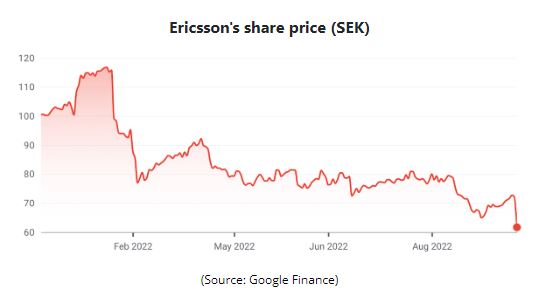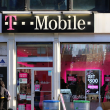Ericsson tumbles as profits shrink and CEO forecasts U.S. slowdown
No amount of management gushing about 5G and Ericsson’s strong performance in that market could enthuse investors. The Swedish equipment maker suffered one of its biggest stock-market drops in years after the publication of third-quarter results this morning, with shares down nearly 16% at noon in Europe. It has fallen 47% since the start of the year, wiping out much of the improvement it had enjoyed since Börje Ekholm replaced Hans Vestberg as CEO in 2017.
Staff at the company could be forgiven for scratching their heads in bewilderment. As Ekholm pointed out during his routine call with financial analysts this morning, Ericsson has picked up six percentage points of radio access network (RAN) market share outside China since 2017, today claiming 39% of all business. It continues to land contracts at the expense of not just Huawei, its unpopular Chinese competitor, but also Nokia, a Finnish rival that has been in 5G recovery mode after earlier missteps, according to Ekholm. Third-quarter sales rocketed 21%, to 68 billion Swedish kronor (US$6.1 billion), compared with the year-earlier period.
The improvement was far less on a constant-currency basis, though – just 3% overall and about 4% at the networks division accounting for more than 70% of sales. Worse, profitability was hurt by a SEK1.1 billion ($98 million) year-on-year slump in licensing revenues, which analysts at Danske Bank attribute to ongoing litigation with Apple, and higher component costs. After pumping even more into research and development than it did a year earlier, Ericsson was left with an networks operating margin of 19.9% – down 3.8 percentage points year-on-year. Further down the P&L statement, overall net profit dropped 7%, to SEK5.4 billion ($480 million).
The outlook is troubling, too. Ericsson generates about 39% of its revenues in North America, which was by far its fastest-growing regional market for the third quarter. A slowdown is on the near horizon. “Operators are guiding for lower capex in 2023,” said Ekholm. His hope is that other regions will pick up the slack, and Ericsson has just landed important 5G contracts in India. But it is spending heavily in the interests of boosting its footprint.
No digital turnaround
Add to that Ericsson’s perennially underperforming digital services part, now lumped together with managed services in the new-look cloud software and services division. Revenues there came to SEK14.2 billion ($1.3 billion), dropping 5% on a constant-currency basis, and its loss widened by SEK500 million ($44.8 million), to SEK800 million ($71.6 million). Shareholders seem increasingly bothered by Ekholm’s failure to turn it around.
To read the complete article, visit Light Reading.

















